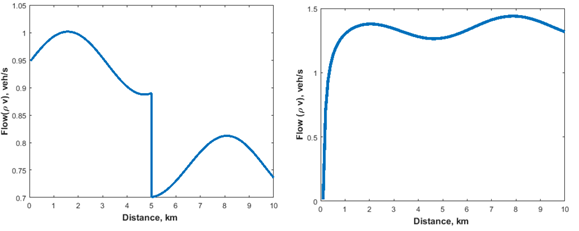Macroscopic Traffic Flow Characterization at Bottlenecks
Published In: Civil Engineering Journal
Abstract:
Traffic congestion is a significant issue in urban areas. Realistic traffic flow models are crucial for understanding and mitigating congestion. Congestion occurs at bottlenecks where large changes in density occur. In this paper, a traffic flow model is proposed which characterizes traffic at the egress and ingress to bottlenecks. This model is based on driver response which includes driver reaction and traffic stimuli. Driver reaction is based on time headway and driver behavior which can be classified as sluggish, typical or aggressive. Traffic stimuli are affected by the transition width and changes in the equilibrium velocity distribution. The explicit upwind difference scheme is used to evaluate the Lighthill, Whitham, and Richards (LWR) and proposed models with a continuous injection of traffic into the system. A stability analysis of these models is given and both are evaluated over a road of length 10 km which has a bottleneck. The results obtained show that the behavior with the proposed model is more realistic than with the LWR model. This is because the LWR model cannot adequately characterize driver behavior during changes in traffic flow.

